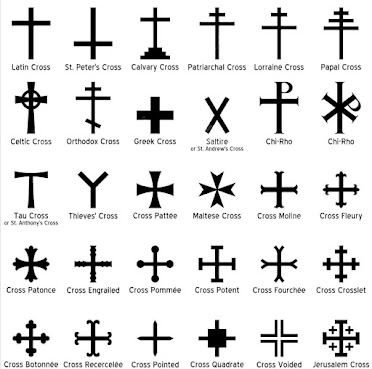Ancient Egyptian Culture
The Ankh became a connecting symbol of great civilizations across the world for 5000 years. Ankh is an Egyptian hieroglyphic symbol for "life" or "breath of life" (Latin, meaning “cross with a handle"). Ankh symbolically represents generative principle of nature. The ankh represents the union of man (Osiris, the cross) and woman (Isis, the oval) and symbolizes the creation of life through this union. The horizontal part of the cross represents the division between the heaven and earth while the vertical part is considered to represent the two-way communication between these two realms. The Egyptians believed that the afterlife was as meaningful as the present one and the ankh provided the key to the gates of death and what lay beyond.
Christianity
The ankh's association with the afterlife made Coptic church of Egypt to inherit potent symbol in the 4th century BCE. Ankh is a symbol of Christ's promise of everlasting life through belief in his sacrifice and resurrection through Christ. There are many types of crosses among various denominations. Emperor Constantine was a Pagan. He adopted the pagan symbolism so that it would be easier for the pagans/idol worshippers to convert.
Hinduism (Shivling or Shivalingam)
Like Ankh representing union Osiris and Isis, it represents union of Shiva and Parvati. Hindus consider the lingam and yoni together to symbolize the union of the male and female principles and the totality of all existence. There are many other stories exist in Hinduism.
Arthanarishwar and Ankh
Ardhanarishvara, (Sanskrit: “Lord Who Is Half Woman”) half male and half female figure of Shiva (right, male) and Parvati (left, female). It means the lord whose half is a woman.
Isis and Osris immaculate union (Egypt) and Kali and Shiva union (Hinduism)
Isis and Osris immaculate conception is similar to Shiva and Parvati union. According to Mr. Devdutt Pattanaik is a famous mythologist, in the Shiva lingam, the phallus does not point downward but points upward. This is because Shakti is on top of Lord Shiva, facing north, while he lies on his back facing south. This position is called viparita-rati or reverse status in Tantra. Lingams are found at Harappa and Mohenjo-daro excations. The Pashupati seal is ithyphallic and depicts proto-type Shiva.
Swastika
Ancient symbol, Swastika is sign of spiritual energy flow, well being and auspiciousness. The word originates from Sanskrit, as in “swasth” for health and “tika” meaning mark. Swastika is found in the Egypt, Indus Valley, Pre-Vedic-Indus, Hindus, Buddhists, Greeks, and many other cultures. The Swastika is the originator of fire by friction. Agni, the fire god, is born from the conjunction of pramantha and arani, the process symbolized by the swastika. The Swastika represents the two pieces of wood which were laid cross-wise upon one another before the sacrificial altars in order to produce the holy fire (Agni), and whose ends were bent round at right angles and fastened by means of four nails, so that this wooden scaffolding might not be moved. At the point where the two pieces of wood were joined, there was a small hole, in which a third piece of wood, in the form of a lance (called Pramantha) was rotated by means of a cord made of cow’s hair and hemp, till the fire was generated by friction. In Hinduism, these four arms represent as 'the four arms of Vishnu'.
Saptarishis (seven sages, Big Dipper) circumambulates (offering Pradakshinam) around the north star/polaris/shiva abode in a clockwise direction clockwise forming a figure (卐) is called swastika. Swastika is a symbol of the sky clock. Shiva's abode is at center (Shivasakthi). In the Rigveda Mt. Meru is described as a transcendental mountain extending from the deepest ocean up into space and the summit of lord Shiva's abode is near the North Star or Polaris.
Hinduism Pavithram and Knot of ISIS
Hindus priests, wear this key like symbol Pavithram made up of Dharba grass during every ritual or Puja. Like Egyptian Gods get or give energy with Ankh, Hindus get energy from the sun by wearing Pavithram. This symbol can be interpreted as Lingam and Yoni of Saivism as well. The knot/tyet sign was considered a potent symbol of protection in the afterlife and the Book of the Dead specifies that the knot/tyet be made of blood-red stone, like this example, and placed at the deceased's neck.
Islam
A few Hindu scholars claim that the Black Stone in Kaaba is actually a Shiva lingam. When Muhammad Paigambar attacked Kaaba and destroyed all the idols there, he did not destroy this Black Stone. Muslims believe this stone was sent by Allah to the Earth to reduce the sins of humans. Muslims circumambulate Kaaba to symbolize their belief in and worship of the one true God, Allah.
Chinese
Yin Yang (duality, opposite entities) in Taoism, are the same as Ida-Pingala (solar/lunar or masculine/feminine/Pingala) in Meditative/Yogic systems. Ida refers to the chandra (yin) energies of the moon while pingala refers to the surya (yang) energies of the sun. In biology class, we learnt the union of male and female organs leads to the creation of life.
Future interpretations
As religions evolve over the time, increasingly the future priests will interpret these symbols to theories such as Black hole, Singularity, Big Bang, Supernova, Cosmic pillar, Cosmic consciousness, and Nuclear energy.





.png)
